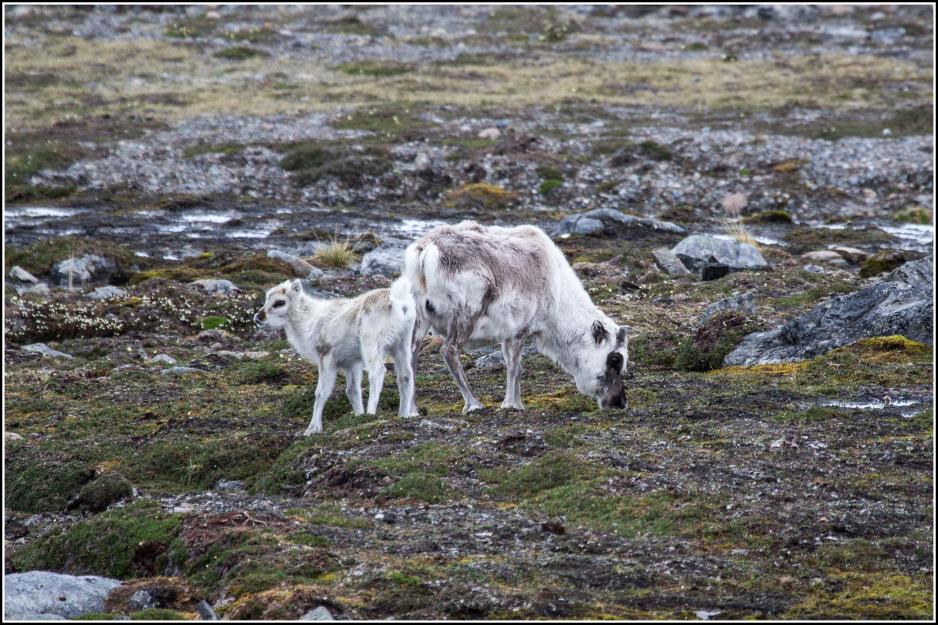Op-ed: Tightening the Environmental Regulations in Svalbard

Since the 1970s, the average temperature has increased between 3 and 5 degrees. Today, Svalbard is experiencing major changes in air temperature which lead to warmer summers and winters, and which in the next round affects animals and plants. Climate change has a different impact on the reindeer in the vast landscape of Svalbard. (Photo: Smudge 9000/Flickr)
Climate change together with increased activity has resulted in a great pressure on the vulnerable arctic wildlife and nature in Svalbard. We are now tightening the environmental regulations in Svalbard to strengthen the protection of flora and fauna.
This is a opinion article, written by an external contributor. The article expresses the writer's opinions. High North News is not responsible for the content in external links
Preserving the distinct characteristics of the wilderness in Svalbard is one of several overriding objectives for the Svalbard policy.
In December 2019, the Norwegian Government announced that access and passage in Svalbard must be regulated so that the vulnerable wilderness in Svalbard is preserved for the future, and therefore, would consider several measures, including stricter rules on landing in vulnerable areas.
A total of 68 per cent of Svalbard’s land areas and 87 per cent of the territorial waters are protected as nature reserves and national parks and most of the archipelago is still untouched wilderness. Few, if any, areas so far north have a similarly rich flora and fauna.
Untouched nature is becoming increasingly rare in a global context and today, Svalbard is one of the largest remaining wilderness areas in Europe. Global warming is having a particularly strong impact on Svalbard and makes the natural environment of Svalbard even more vulnerable.
The combination of rapid climate change and virtually untouched nature has made Svalbard even more important as a reference area and source of important knowledge about climate change and the environment.
A time where society and tourism were less complex
Climate change has also made many species and natural environments more vulnerable to the effects of traffic. Together with increased traffic, this increases the potential for a negative impact on wildlife and wear and tear on the vegetation and cultural remains.
The main features of the environmental regulations have remained unchanged since the Svalbard Environmental Protection Act came into force in 2002. The Act was drawn up at a time where both society in general and tourism, in particular, were less complex.
The number of tour operators and visitors was far fewer, and the number of organised tours was less extensive both in terms of activities and season. This has changed and like other areas of society in Svalbard, the regulations must be adapted to this changing reality.
The newly adopted amendments to environmental regulations in Svalbard are necessary to reduce the overall impact of traffic on nature and wildlife in Svalbard. The amendments will entry in to force 1 January 2025.
Adopted amendments to the environmental regulations in Svalbard:
- Landings in protected areas are prohibited, except for 43 landing sites shown on maps included as annexes to regulations for protected areas. This prohibition only applies to tourist activities, not individual travellers or permanent residents.
- A limit of 200 passengers on board ships in all protected areas.
- The use of unmanned vessels (drones) is prohibited in the protected areas.
- The use of snowmobiles and tracked vehicles is permanently banned on sea ice after 1 March in selected fjords, with an exception for access to cabins.
- Motor traffic at sea may not exceed the speed limit of 5 knots at a distance of 500 metres form land outside bird cliffs in the period 1 April to 31 August.
- Motor traffic at sea must keep a minimum of 150 metres distance from haul-sites for walruses (except for necessary access to ports, buildings etc) and the speed limit for motor traffic is 5 knots at a distance of 300 metres from haul-sites for walruses.
- A general ban against breaking fast ice. The ban does not apply to motor traffic to keep the fairway into Longyearbyen and Barentsburg open, for supplies to Ny-Ålesund, as well as for the Norwegian Coast Guard’s performance of necessary tasks.
- More camping activities will require a permit.



